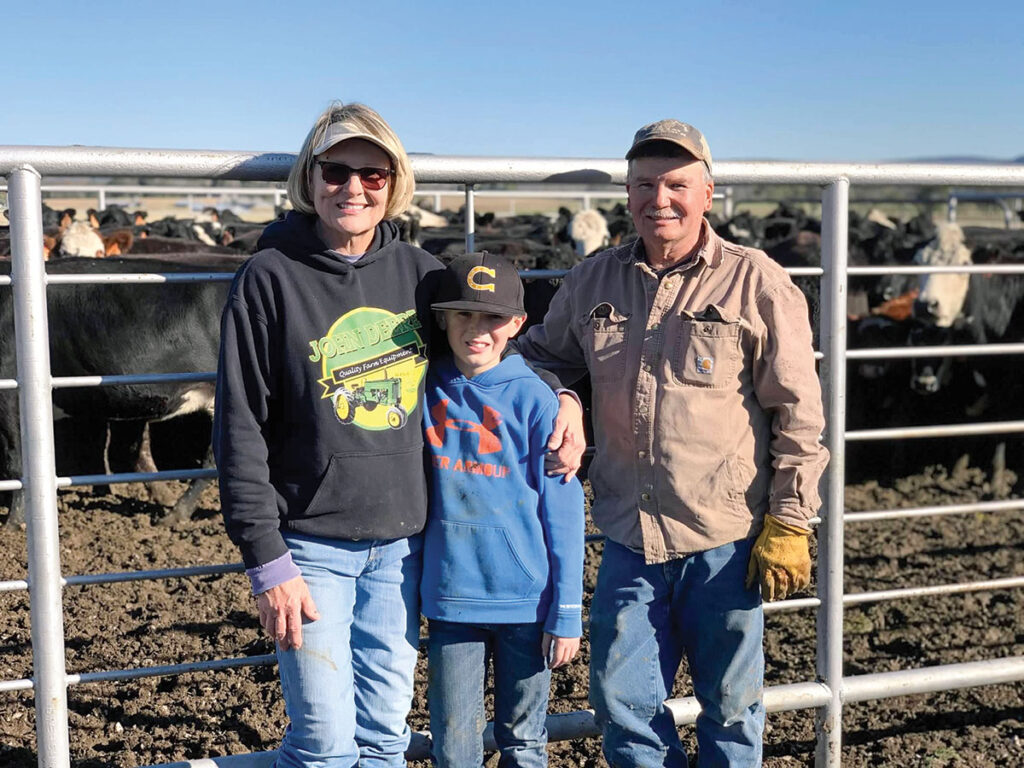
The West family has been on their Arkansas farm for six generations
The Randy and Cheryl West farm in Prairie Grove, Ark., was founded in 1860 by Robert Jay West. Randy and Cheryl are the fourth generation with their daughters being the fifth and their grandchildren the sixth to farm the land.
Farms like theirs capture the heart of American agriculture by changing, evolving and adapting as times dictate. Chicken production began in 1957, with Randy taking over in 1974. After raising chickens for 40 years, the houses needed extensive and costly updating. The couple decided it was the right time to leave the poultry industry. They did, however, continue forage production and a cow/calf operation.
“The process of watching hay grow and then cutting, raking and baling it is very satisfying,” Cheryl explained. “Randy is a perfectionist and everything he does helps us produce high-quality hay and maintain customers year after year.”
In the 1980s, the couple identified a high-demand niche market for horse hay. Then, after leaving the chicken industry, they parceled off 220 acres for hay production. While West Farm always produced some hay, the acreage needed to be plowed and sprigged for optimum production. Bermudagrass was a good choice because the species grows well in Arkansas’s climate, while also having the appropriate nutrition. As the acreage was transitioned, they purchased bermudagrass sprigs and cut some from their fields.
Fields are broadcast sprayed with a pre-emergence spray that hinders weed growth though some, especially crabgrass, breakthrough. Clovers are not welcome in a hayfield because they can shade out the Bermudagrass. Those weeds that breakthrough the pre-emergent barrier are broadcast sprayed and/or spot sprayed according to need.
Hhay fields are soil tested annually for pH level, as well as potassium, phosphorus and nitrogen levels. If any of those nutrients are off balance, production volume suffers. Consequently, the hay fields are fertilized according to the specific needs of each field.
For the last several years, Randy has applied liquid nitrogen. Currently, a third party spreads blended potassium and phosphorus on the fields, with lime being spread separately because of weight issues. The volume used in their hay fields is large enough to make purchasing each nutrient separately by the semi-load a significant cost-cutting measure. The plan is for Randy to apply all of the components separately according to each fields’ needs.
“Our most difficult obstacle is Mother Nature,” Randy said. “We don’t have irrigation so we are totally dependent on rain. Fortunately, if one year hay quality doesn’t meet the higher standards for horse hay, I can still sell it as cow hay, which means the year won’t be a total wash. We believe in the Golden Rule and want to treat all people fairly. We sell exactly what we offer. It’s the right thing to do and it’s good for business because my customers know they can trust me.”
The remaining 300 acres of West Farm are devoted to a cow/calf operation. The pastures are comprised of Bermudagrass, fescue and clover and fertilized in the spring while weeds are sprayed as needed. The acreage is divided into four pastures, which are sometimes over seeded with wheat in the fall. Except for a five-year period a number of years ago, the farm has always produced cattle. The herd is now managed by their son-in-law Colt Bartholomew.
The farm’s herd is made up of 130 heavily Angus-influenced cows bred by both Hereford and Black Hereford bulls. The combination is intended to produce mainly black baldies, with an occasional red-white face. The majority of the herd calves are born in late September which blends well with the hay production cycle. Calves are sold at weaning, if the market is right. If not, they retain the calves until the market is more favorable, sometimes a month sometimes three. Calves are fed a commerical ration, with the herd receiving mostly grass and hay.






